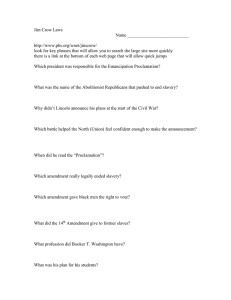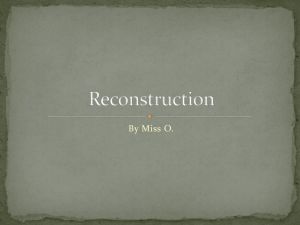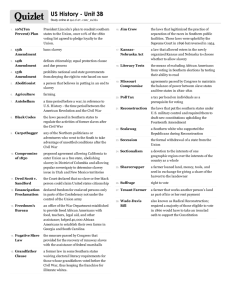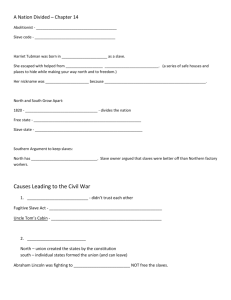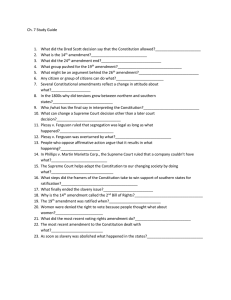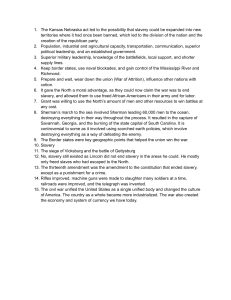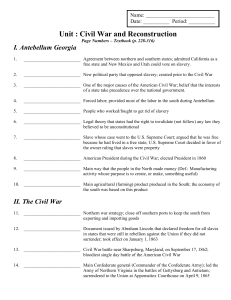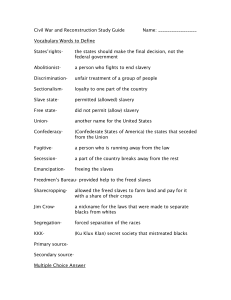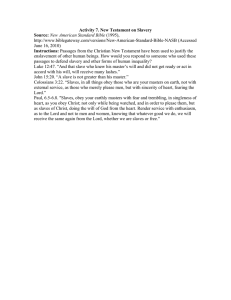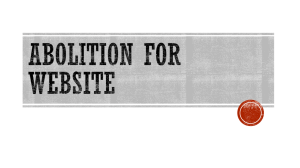Race and Ethnicity
advertisement
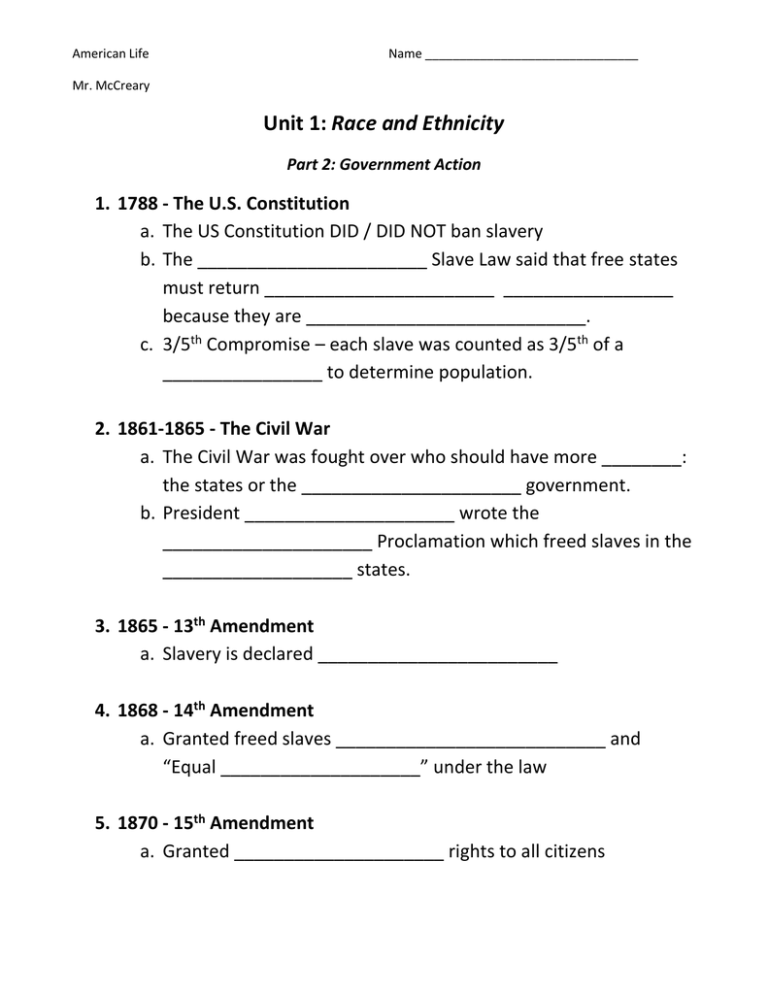
American Life Name _______________________________ Mr. McCreary Unit 1: Race and Ethnicity Part 2: Government Action 1. 1788 - The U.S. Constitution a. The US Constitution DID / DID NOT ban slavery b. The _______________________ Slave Law said that free states must return _______________________ _________________ because they are ____________________________. c. 3/5th Compromise – each slave was counted as 3/5th of a ________________ to determine population. 2. 1861-1865 - The Civil War a. The Civil War was fought over who should have more ________: the states or the ______________________ government. b. President _____________________ wrote the _____________________ Proclamation which freed slaves in the ___________________ states. 3. 1865 - 13th Amendment a. Slavery is declared ________________________ 4. 1868 - 14th Amendment a. Granted freed slaves ___________________________ and “Equal ____________________” under the law 5. 1870 - 15th Amendment a. Granted _____________________ rights to all citizens 6. 1876 – Jim Crow Laws a. Series of _____________ passed in _________________ states to keep ______________________ in power. b. Examples: ___________ Tax, ________________Tests, separate _________________-__________________________________________ 7. 1896 – Plessy v Ferguson a. “Separate but _______________” is ok. b. separating the races (__________________________) is _____________ as long as facilities for both are “________________” 8. 1954 – Brown v Board of Education (Topeka, KS) a. Declared that ________________________ in schools was ____________ 9. 1971 - Swann v Charlotte-Mecklenburg Board of Education (CharMeck) a. It is ok to ___________________ school through “forced ___________” 10. a. b. c. d. 1978 - Bakke v University of California Medical School It is ok to use ___________ as a factor for admission into ___________ Legalized “_______________________ _____________________” Affirmative Action is a positive effort to recruit __________________ members or _______________________ for jobs, promotions, & educational opportunities due to past __________________________. Critics call it “___________________________ Discrimination”
